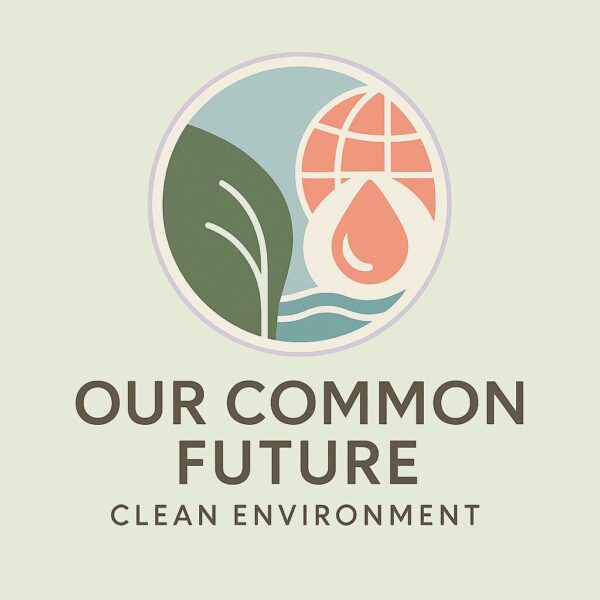This goal focuses on enhancing international cooperation and building strong partnerships among governments, the private sector, and civil society to achieve all 17 Sustainable Development Goals. It emphasizes the importance of global collaboration in areas such as finance, technology, capacity-building, trade, and systemic issues like policy coherence and multilateralism.
1.Key points of SDG 17.
l Global partnerships for sustainable development.
l Mobilize financial resources for development.
l Promote access to technology and innovation.
l Enhance skills and capabilities in developing countries.
l Promote fair and open trade systems.
l Ensure policies support sustainable development.
l Improve data collection for progress tracking
2.Achievements Since 2015
Global efforts since 2015 have led to some notable achievements in pursuing SDG 17.
l Increased international financing for sustainable development projects has provided crucial support.
l Technological cooperation has expanded, giving developing nations greater access to innovations.
l Enhanced capacity-building initiatives have focused on improving education, health, and digital skills.
l Global trade agreements have aimed at creating fair and open trade systems.
l Multilateral partnerships have strengthened to tackle pressing global issues, such as the Paris Agreement on climate change.
l Data-sharing platforms and improved monitoring mechanisms have been implemented to track SDG progress effectively.
l Greater involvement from the private sector in global development initiatives has also played a key role in these achievements.
Despite these advancements, challenges remain, particularly for developing countries, which often struggle to keep pace with resource and capacity demands.
3.Challenges Faced by Developing and Developed Countries
A. Challenges for Developing Countries
Ø Financial limitations hinder their ability to invest in sustainable infrastructure and development projects.
Ø Restricted access to advanced technologies limits their ability to innovate and compete globally.
Ø Institutional weaknesses reduce the effectiveness of governance and implementation of development programs.
Ø Heavy dependence on foreign aid creates vulnerability to fluctuations in funding.
Ø Data gaps make it difficult to monitor progress accurately and make informed decisions.
B. Challenges for Developed Countries
n Inconsistent financial commitments to aid programs result in unreliable support for developing nations.
n Concerns over intellectual property rights slow down the transfer of crucial technologies.
n Policy incoherence across sectors sometimes leads to conflicting global development goals.
n Trade barriers and protectionist policies can stifle the ability of developing nations to access larger markets.
n Short-term investment focus hinders long-term sustainable development collaboration.
Both developed and developing countries have distinct roles to play, and overcoming these challenges is essential for global progress.
4.Role of Developing and Developed Countries in SDG 17
A. Developing Countries.
ü Mobilizing domestic resources to finance their own development.
ü Embracing technology and innovation to drive growth.
ü Strengthening institutional capacity to improve governance and execution of development policies.
ü Collaborating through South-South cooperation to share resources and knowledge with neighboring countries.
ü Improving data systems for better monitoring and accountability of progress.
B. Developed Countries.
² Offering financial assistance to developing nations through international aid programs.
² Facilitating technology transfer to help developing nations innovate and grow.
² Supporting capacity-building efforts in areas such as education, healthcare, and governance.
² Encouraging fair trade practices that provide developing countries access to larger markets.
² Fostering policy coherence to align national policies with global development goals.
Both groups must work together to address these hurdles and develop meaningful solutions.
5.Solutions and Roadmap to Achieve SDG 17
To overcome these challenges, several strategies and frameworks have been adopted globally:
A. Developing Countries.
u Strengthening tax systems and governance structures to mobilize internal resources for sustainable development.
u Enhancing skills and institutions to better handle development projects.
u Focusing on innovation and technology adoption to bridge the digital divide.
u Collaborating regionally with neighboring countries to share knowledge and resources.
u Improving data collection and monitoring mechanisms to assess progress toward sustainable goals.
B. Developed Countries.
v Committing to increase financial aid and development assistance.
v Facilitating technology-sharing initiatives to help developing countries leapfrog into advanced technologies.
v Supporting capacity-building programs to enhance skills and infrastructure in developing nations.
v Creating fair trade agreements that benefit developing nations by providing better market access.
v Ensuring policy coherence across national and international development efforts.
6.Global Roadmap.
The 2030 Agenda for Sustainable Development serves as the overarching framework for global cooperation.
The Addis Ababa Action Agenda outlines a financial framework for development, with a focus on innovative financing mechanisms.
The Technology Facilitation Mechanism fosters collaboration between countries, providing a platform for innovation-sharing.
Global partnerships are continually evolving to enhance cooperation across sectors, including governments, private businesses, and civil society.
7.Conclusion.
Achieving SDG 17 is not only about enhancing partnerships but is critical for the success of all Sustainable Development Goals. Both developing and developed countries play key roles in this endeavor. While significant progress has been made since 2015, many challenges remain—particularly around financing, technology access, and policy coherence.
The solutions adopted, including increased financial aid, technology transfer, and capacity-building programs, show that global partnerships are moving in the right direction. The global roadmap, driven by frameworks like the 2030 Agenda and Addis Ababa Action Agenda, provides a clear path for nations to follow.
Ultimately, achieving SDG 17 will require continuous cooperation, innovation, and commitment from all stakeholders, ensuring that global partnerships are strengthened for the sustainable future of all nations
